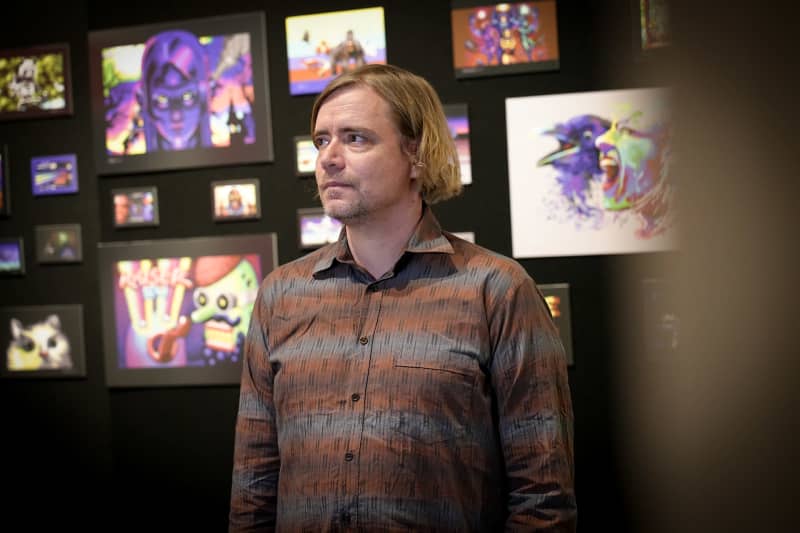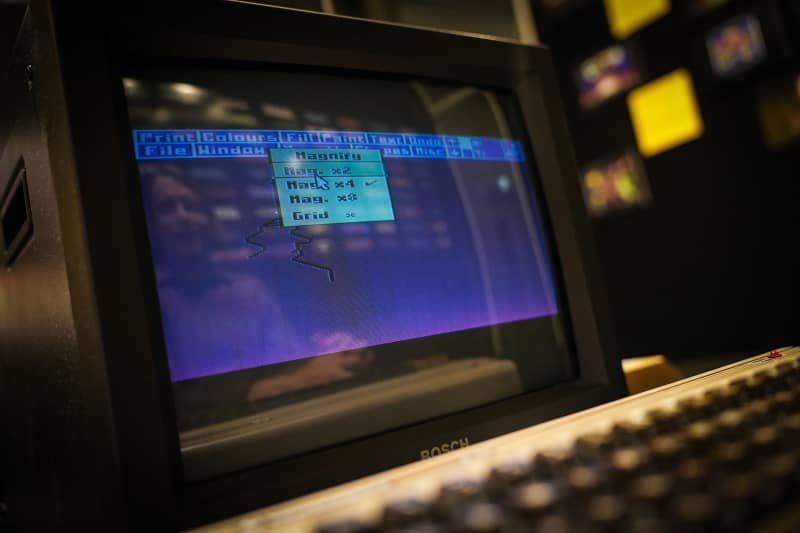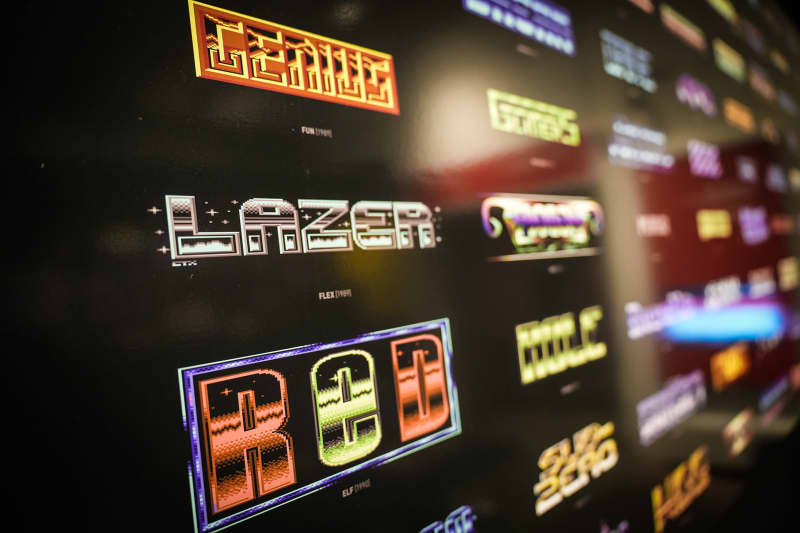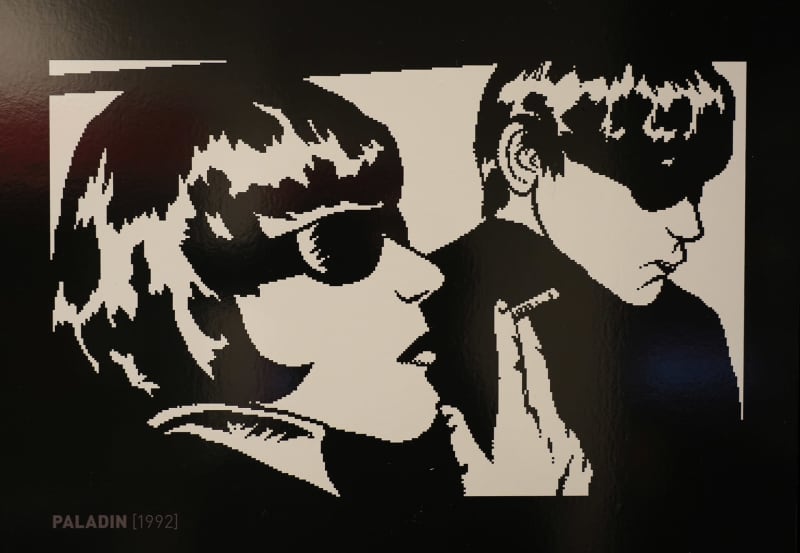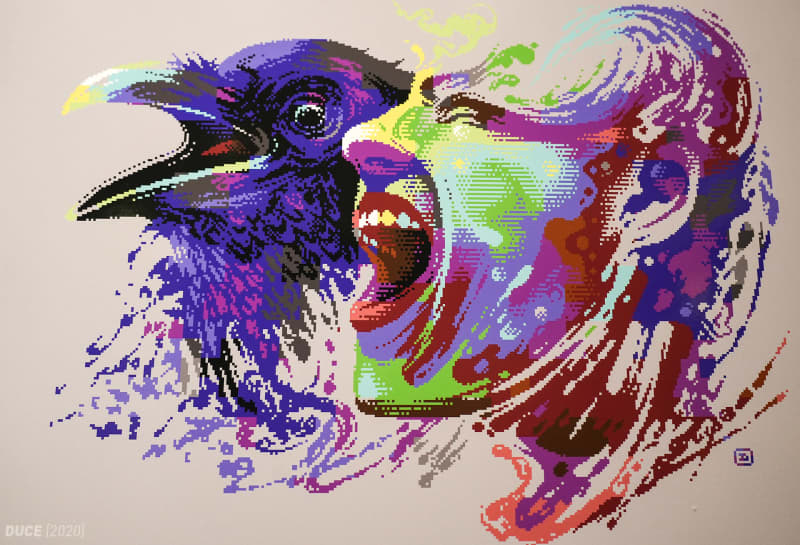The Finnish Game Museum’s Pixeled Years exhibition in Tampere presents art born around the demoskene subculture. Demoscene was a pioneering activity, which has been of great importance to the birth of the domestic gaming industry.
The world was revolutionized when the Commodore 64 appeared in the early 1980s. It was the first home computer that, in addition to gaming, could also create digital art.
Technical challenges were the norm
Commodore 64 also took Tommi Mustur with him: at first he played, but soon started working on rudimentary games himself in the BASIC programming language. The collective creation of pixel graphics was born in a local computer club, and you always had to be able to make a little better of the output of your friends.
– There were plenty of technical challenges, especially in the early days. In the case of the Commodore 64, all the graphics have to be separately programmed into the screen, they don’t appear there automatically like on the current machine. Making some great graphics was an achievement in itself.
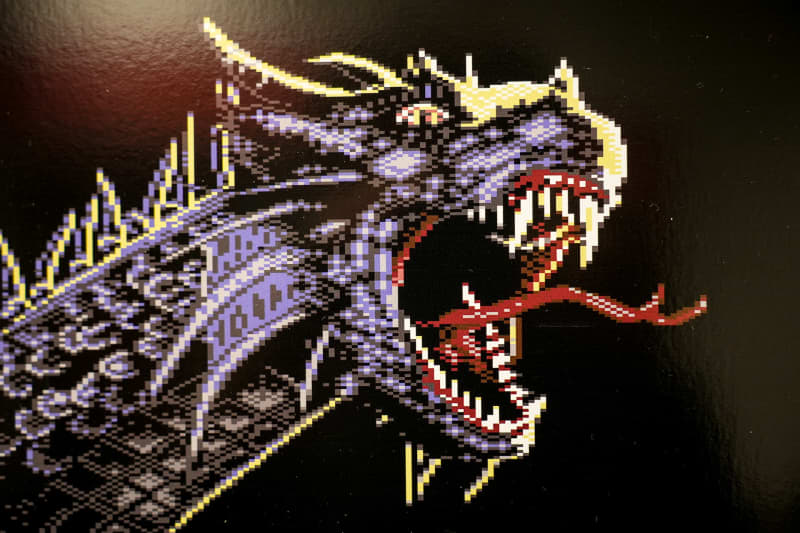
Demoskating quickly became an international hobby for Musturink. Demos containing games, graphics and music from the own demo group were shared and actively exchanged by mail in the form of floppies. At the time, Musturi’s exchange club, which was in primary school, included sixty people from Sweden, Germany and Turkey at its best. The games spread among children as cracked copies, i.e. illegal versions.
– The parents didn’t know anything about this, because they usually didn’t understand computers. These crack copies had small intros, so at the beginning of the game you could wave the group’s logo and play music.
Logos were indeed the first steps in graphics, because there were no tools available yet that would have been able to make full-screen images.
The boys expressed their own creativity
Influences for the pixel graphics of the early days were largely sought from the current phenomena of popular culture at the time: cartoons, skateboarding, graffiti, metal music and specifically the world of boys.
– When the demoscene started in Scandinavia, it was specifically youth culture – and what’s most exciting – boys’ creative culture. This is noteworthy because teenage boys rarely express themselves through art or creativity, says Tommi Musturi.
Early pixel graphics can be viewed and evaluated from many perspectives. On the one hand, it is characterized by a format, size and limited color palette limited by certain techniques, on the other hand, there are either intentional or unintentional references to art history in the works. For example, Musturi’s own work from 1990 touches on a centuries-old mythological-religious theme, i.e. the dragon and its slayer, St. George.
– In the early days, for me, it was largely about overcoming technical challenges. Later, when I got myself an art education, I’ve started to think that some of these works slip effortlessly into the context and framework of art.
All in all, making pixel graphics and computer music was marked by ambition. There was competition between the demo groups, and the groups met at demo parties and other events of the genre. For example, Finland’s largest computer festival Assembly started its operations in the early 1990s specifically as a demo party.
– Back then, we didn’t talk about games: if someone played in Assembly, it was considered that there is a geek there, that what they really play here, demos should be made here. The work was very serious, and even today it can take years to make a demanding demo.
The gaming industry owes a lot to the demo scene
Pixel-driven demoskene art is made in the 21st century with the same specs as before, although in a Mac/PC environment with modern tools and less often with the original Commodore 64. However, the unwritten rules include that, in principle, the graphics must also be viewable on the original machine. Thus, the works from the 1980s in the Pixeled Years exhibition have the same starting points as the pixel art of recent years.
Someone might wonder why and how the 40-year-old Commodore 64 has managed to hold its own in the demo scene, even though there are currently a huge number of different technical options – not to mention the increased power of the machines.
– This platform fascinates precisely because of its original iron and limitations, which means that the creators have to face challenges, summarizes Tommi Musturi.

For the Commodore 64, Musturi also likes to talk about ecological, low-consuming graphics.
– Even though there are more than a hundred works in this exhibition, the entire graphic fits into a few hundred kilobytes.
The rumination of history also reveals an interesting perspective on the domestic gaming industry. The roots of large domestic game houses, such as Housemarque, are strongly in the demo scene.
– Practically all the founders of the domestic gaming houses in the early 1990s have solid demoscene experience and people who have continued working with the demoscene. I would say that without the demoscene, the domestic gaming industry would not be what it is at the moment.

